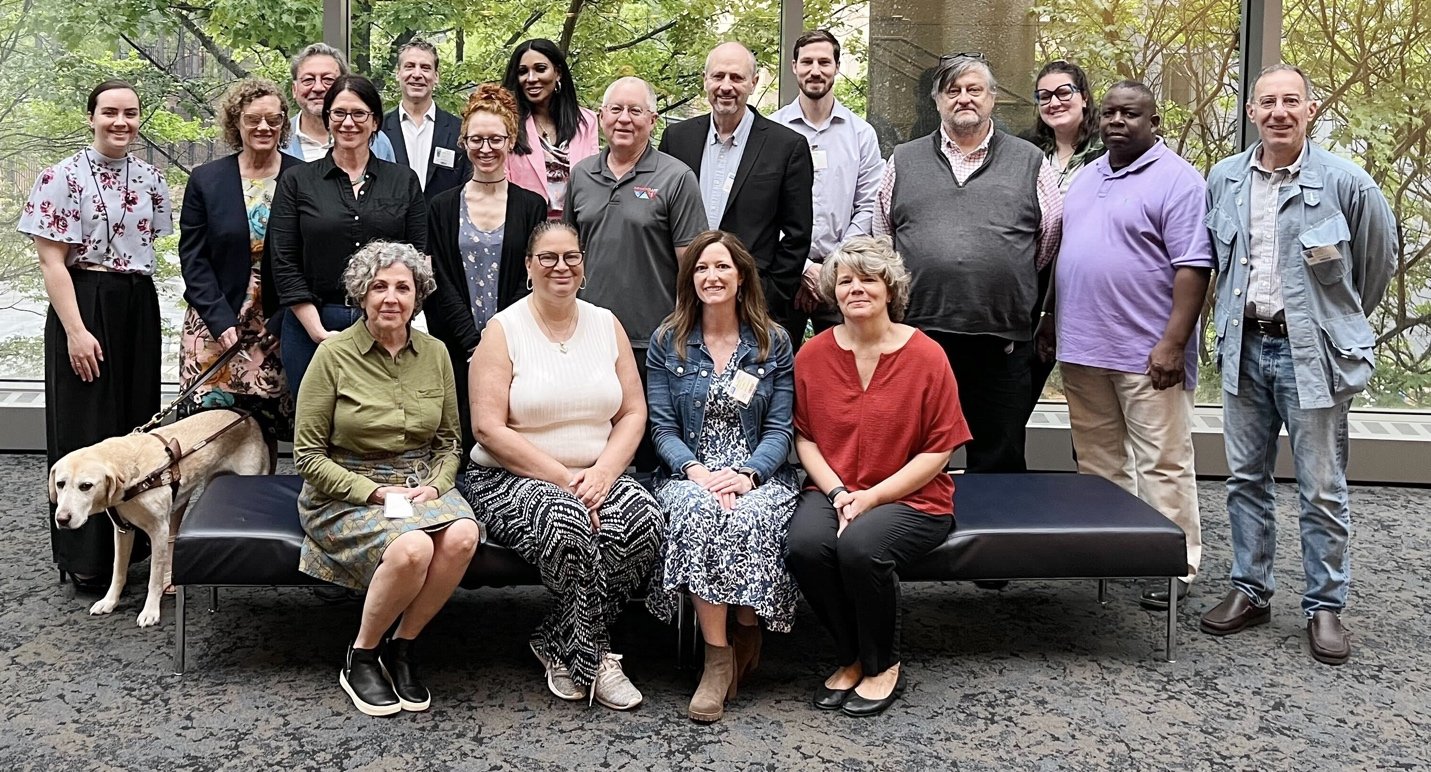FOR IMMEDIATE RELEASE
Training to CONVERGE: Tabletop Exercise Advances Natural Hazards Reconnaissance and Research
CONVERGE Leadership Corps conducts earthquake-tsunami scenario with support from the Centers for Disease Control and Prevention
Boulder, CO, May 29, 2024 — The NSF Natural Hazards Engineering Research Infrastructure (NHERI) CONVERGE facility, headquartered at the Natural Hazards Center at the University of Colorado Boulder, is home to the CONVERGE Leadership Corps. This group includes the principal investigators for the eight National Science Foundation (NSF)- and Centers for Disease Control and Prevention (CDC)-funded extreme events reconnaissance and research (EER) networks. In addition to the EERs, the Leadership Corps also brings together the principal investigators of four NHERI components most focused on disaster reconnaissance, including the Network Coordination Office, RAPID, DesignSafe, and CONVERGE.
Launched in 2019, the Leadership Corps has played an integral role in improving communication, coordination, and collaboration across engineering, social science, natural science, and public health research communities. By identifying and training researchers before disaster occurs, the members of the CONVERGE Leadership Corps help to strengthen science and ethical perishable data collection practices.
After five years of working together closely across disciplinary boundaries, the Leadership Corps decided to put their written plans to the test. With the support of the CDC and NSF, on April 18-19, the CONVERGE Leadership Corps convened a tabletop exercise in Atlanta, Georgia. The primary purpose of the exercise was to test the communication and coordination capabilities of the EER networks and the NHERI facilities that support their work.
The tabletop was centered around a mass casualty earthquake-tsunami scenario in the Pacific Northwest. During the two-day exercise, the principal investigators of the various EERs and NHERI components worked to clarify how researchers associated with these networks would ethically collect and rapidly publish perishable data after the event. The tabletop was also concerned with advancing deeper interdisciplinary integration and convergence research.
A four-person evaluation team observed the exercise and produced a written evaluation of where key objectives were, and were not, met. The evaluation team also made actionable recommendations for the future of the Leadership Corps.
“This was the first time the CDC tabletop planning team supported a research-focused exercise,” said Lori Peek, principal investigator of NHERI CONVERGE at the University of Colorado Boulder. “It was really amazing to learn from these seasoned experts about how a tabletop scenario can help advance the mission and activities of a group like ours.”
The CONVERGE Leadership Corps met in May to discuss the evaluation results and they will be convening again in June to prioritize next steps and action items for moving forward.
“We learned a lot from this exercise,” said Julio Ramirez, principal investigator of NHERI Network Coordination Office (NCO) at Purdue University. “It both revealed our strengths as well as gaps in our communication and data collection plans that we now are working to address so we can continue to advance interdisciplinary disaster research.”

The purpose of the CONVERGE Leadership Corps exercise in Atlanta was to test the communication and coordination capabilities of the EER networks and the NHERI facilities that support their work.
Seated, L-R: Maria Esteva, Robin Soler, Lori Peek, Jennifer Horney
Standing, L-R: Sasha Reynolds, Britt Raubenheimer, Julio Ramirez, Tracy Kijewski-Correa, Joe Wartman, Candace Evans, Tracy Thomas, Tim Cockerill, David Abramson, David Roueche, David Frost, Delaney McGuire, Eric Woods, David Eisenman
Media Contacts
Lori Peek, PhD
Principal Investigator, NHERI CONVERGE, SSEER, and ISEEER
Professor, Department of Sociology
Director, Natural Hazards Center
University of Colorado Boulder
lori.peek@colorado.edu
About the Natural Hazards Engineering Research Infrastructure
Funded by the U. S. National Science Foundation, the Natural Hazards Engineering Research Infrastructure – NHERI – is a network of experimental facilities dedicated to reducing damage and loss-of-life due to natural hazards such as earthquakes, landslides, windstorms, and tsunamis and storm surge. It is supported by the DesignSafe Cyberinfrastructure. NHERI provides the natural hazards engineering and social science communities with the state-of-the-art resources needed to meet the research challenges of the 21st century.





